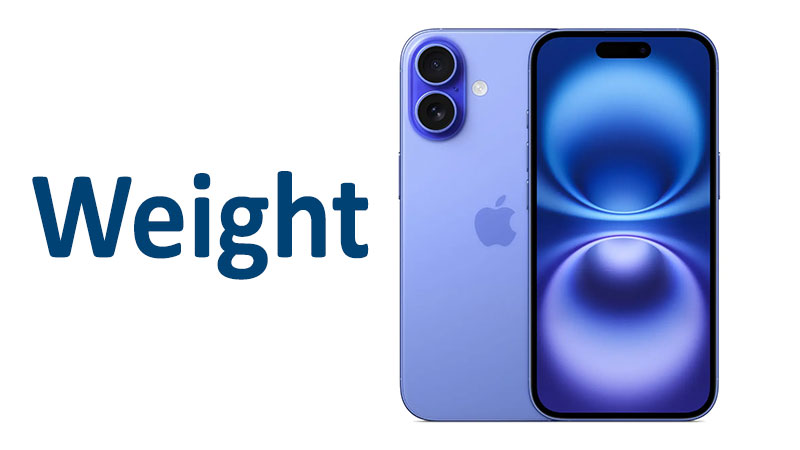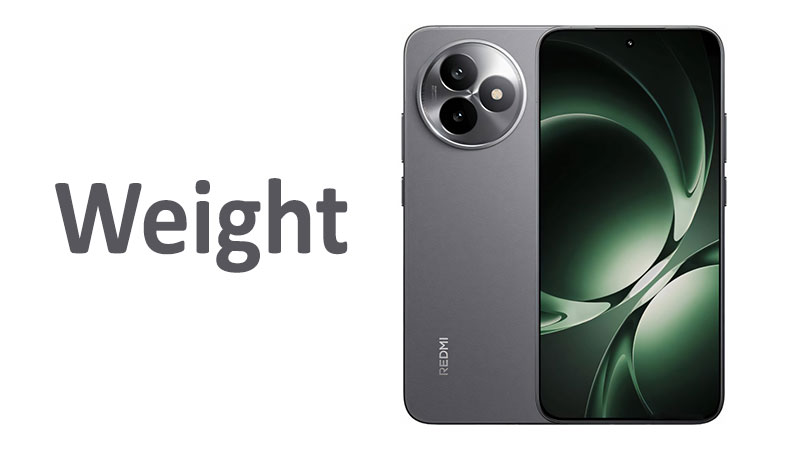In the world of modern technology, every detail matters. For a device as personal and constantly-used as a smartphone, its physical attributes, especially its weight, play a crucial role in the user experience. The Apple iPhone 16 weight, at 170 grams (6.00 ounces), represents a finely tuned balance of advanced technology and ergonomic design. This figure is not just a number; it is a direct reflection of Apple’s engineering philosophy, aiming to deliver a device that is powerful yet comfortable to hold and use for extended periods. Understanding the importance of this specific weight helps consumers appreciate the intricate decisions behind the phone’s design, from its materials to its internal components, and how it impacts daily use.
A Thorough Review of the iPhone 16’s Weight
The weight of the iPhone 16 is a carefully calculated outcome of its feature set. At 170 g, it sits in a sweet spot, offering a reassuringly premium feel without being cumbersome. This section delves into what this weight means for the user and how it compares to other models and competitors.
Key Components Influencing the Weight
The 170-gram weight is the sum of all its parts. This includes the high-quality materials used for its chassis, the advanced camera module, the battery, the display, and the internal logic board. Apple’s choice of materials, such as aerospace-grade aluminum and a Ceramic Shield front, contributes to both the phone’s durability and its overall heft. The haptic engine, stereo speakers, and new cooling system all add to the final figure. The strategic placement of these components is vital to ensure the phone feels balanced in hand.
Specialized Comparisons: iPhone 16 vs. Previous Models & Competitors
To put the iPhone 16 weight into perspective, it is essential to compare it to its predecessors and key rivals.
- Compared to the iPhone 15: The iPhone 16 maintains a similar weight profile to the iPhone 15, signifying a focus on refining the existing design rather than a radical change. This consistency allows users to transition between models without a significant adjustment in feel.
- Compared to the iPhone 16 Pro: The Pro models often carry more weight due to their larger batteries, more advanced camera systems, and use of materials like titanium. The standard iPhone 16’s lighter build makes it more appealing to users who prioritize a more compact and less strenuous feel.
- Compared to Android Competitors: Many high-end Android phones, particularly those with larger screens and more complex camera setups, can exceed the 200-gram mark. The iPhone 16’s 170-gram weight gives it a competitive edge in the lightweight category, appealing to those who want a powerful phone that doesn’t feel like a burden in their pocket or hand.
Pros and Cons of the iPhone 16’s Weight
Pros:
- Comfort and Ergonomics: The 170 g weight is ideal for single-handed use. It reduces wrist strain during long browsing sessions or gaming, making it a very comfortable daily driver.
- Portability: The lighter weight makes the phone easier to carry in a pocket or a small bag without creating a noticeable drag.
- Premium Feel: While not as heavy as some premium-tier phones, the 170 g figure still provides a reassuring sense of solidity and quality, preventing it from feeling cheap or flimsy.
- Balanced Design: Apple has meticulously balanced the internal components so the weight is evenly distributed, preventing the device from feeling top-heavy or bottom-heavy.
Cons:
- Potential for Perceived Less Durability: Some users might equate a heavier phone with a more durable build. The iPhone 16, while robust, might feel less “tank-like” than some heavier, bulkier competitors.
- Less Battery Capacity (Implied): A lighter phone often means a smaller battery compared to its heavier counterparts. While Apple is renowned for its power efficiency, a physically lighter design may suggest a trade-off in battery size, though this is not always the case.
- Limited Room for Advanced Features: The constraints of a lighter chassis can sometimes limit the inclusion of certain advanced features, such as larger camera sensors or more extensive cooling systems, which often add to the overall weight.
Important Points a Buyer Should Know
For a potential buyer, the iPhone 16 weight should be considered in the context of their personal preferences and usage habits.
- Hold it Before You Buy: The feel of a phone is highly subjective. A quick trip to an Apple Store or a retailer to physically hold the iPhone 16 will give you the best sense of whether its 170 g weight feels right for you.
- Impact on Accessories: The weight of the phone will affect the choice of cases and other accessories. A bulky case can easily add another 20-30 grams, potentially negating the benefits of the phone’s lighter design.
- Weight vs. Features: Evaluate whether the slight reduction in weight is a more important factor for you than potential features found in the heavier Pro models. For many, a lighter phone is more practical for everyday use.
Optimizing Usability Through Weight
The engineering behind the iPhone 16’s weight extends beyond just its components. The weight is a key part of the phone’s overall usability. Apple has meticulously worked to ensure that the 170 g feels natural. The weight distribution is balanced, and the phone feels solid and comfortable. This is particularly important for tasks like gaming, video watching, and long phone calls, where the phone is held for an extended time. The ergonomic shape and the well-proportioned weight work together to minimize hand fatigue. The goal is to make the technology feel seamless and intuitive, and the weight is a silent but powerful contributor to this experience.
Conclusion: The Perfect Balance
The Apple iPhone 16 weight of 170 g is a testament to Apple’s design prowess. It represents a careful and deliberate choice to strike a perfect balance between power, durability, and comfort. The phone is light enough to be carried effortlessly but substantial enough to feel premium and durable. For the vast majority of users, this weight will prove to be a significant advantage, enhancing their daily interactions with the device. It is a key selling point that highlights the phone’s user-centric design philosophy. Whether you are a casual user or a power user, the ergonomic benefits of the iPhone 16’s weight are clear. It is a phone designed to be held and used comfortably, without compromise. The iPhone 16 delivers a world-class experience that is easy on the hands and on the go.
FAQ
The Apple iPhone 16 weighs 170 grams (6.00 ounces).
The 170 g weight is generally considered a benefit. It makes the phone comfortable to hold and easy to carry, balancing a premium feel with practicality.
The standard iPhone 16 is typically lighter than the iPhone 16 Pro, which often weighs more due to its larger battery, advanced cameras, and different materials.
Not necessarily. While some heavier phones use denser materials, durability is more about the quality of the materials and the design. The iPhone 16 uses strong, lightweight materials to achieve its balance.
The lighter weight of the iPhone 16 reduces hand and wrist fatigue, making it more comfortable for extended use, such as gaming, watching videos, or long phone calls.



